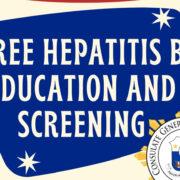Quietly sitting in our kitchen is a good friend but a bad enemy, a killer, when “abused.” We are not talking about fire or boiling water, or knives, or even bacteria. We are referring to an old friend from times immemorial: table salt.
Most of us eat more salt or sodium chloride than our body needs. Some of us ingest 3-4 times more than the Recommended Daily Allowance (RDA) in a day. In the United States, the RDA for sodium is between 1,100 to 3,300 mg for adults, but statistically speaking, the average salt intake in the USA is between 4,000 to 5,000 mg a day. The British are healthier in their RDA, which is called Recommended Nutritional Intake (RNI), set at 1,600 mg. One teaspoon table salt is about 2,400 mg sodium.
Sodium deficiency is uncommon, so there is no reason to be afraid of not getting enough salt. Shaking the salt habit is healthier. Only those who do strenuous or prolonged physical exercises, like athletes, marathon runners, who sweat a lot, people with severe diarrhea or other conditions that cause dehydration may need extra salt. Ordinarily, we do not, because the foods we eat already contain enough. As a matter of fact, usually too much. Salt overload is unhealthy and eventually takes its toll as years go by. Salt is indeed, without exaggeration, a silent killer lurking in our kitchen.
The foods that contain more than enough sodium include processed foods (cured meats, fish and vegetables), canned goods, patis (fish sauce), toyo (soy sauce), bagoong (shrimp paste), dried fish, soft drinks, dikyam (salted dried plums) and recipes that are over-salted. Some individuals even combine some of these foods and condiments.
While salt is an essential part of our body since it is a vital ingredient fundamental for normal physiology, excess amount harms our cells, tissues and organs. Medically speaking, 500 mg (about a fifth of a teaspoon total) a day should suffice for our daily non-strenuous activities. The iodized version of sea salt or regular salt is the recommended version for our use.
Since salt adds taste to food, it is easy to be addicted, and the saltier the food we learn to eat as children, the more our taste buds crave for it as adults. Our threshold increases, and pretty soon, what is normal tasting for us actually tastes too salty for persons used to eating salt in moderation, and more so to those on low-salt-diet.
Those with hypertension (high blood pressure) should use less than 1,500 mg of sodium a day, or limit their intake to no more than ¾ of a teaspoon a day. Eating more than 1,500 mg a day almost instantly raises the blood pressure a bit even among individuals with normal blood pressure, and elevates the blood pressure much higher among hypertensives. Low-salt diet also makes high blood easier to manage and control.
What is not a common knowledge is that excess salt intake is linked to Alzheimer’s, osteoporosis, obesity, kidney disease, diabetes, sleep apnea, and cancer. Among those who habitually use the salt shaker even before tasting the food, the incidence of hypertension, heart attack, and stroke are also much higher.
Why salt is addictive
Eating more salt than what our body physiology needs alters our brain chemistry. When we ingest salt or salty foods, it triggers the release of a substance called dopamine, which is a neuro (nerve) transmitter associated with our brains “pleasure center,” inducing addiction, much like what happens when one indulges in smoking or drinking alcohol, without control and moderation.
A Japanese study revealed that salted food intake is associated with a 15 percent increase in the risk for developing cancer, like stomach cancer and cancer of other organs. Excess salt also leads to faster calcium loss, which leads to osteoporosis and bone fractures. This bad habit also causes insulin resistance, leading to, and aggravating, diabetes. Some clinical research found that excess salt ingestion among people with high blood “are up to 600 percent more likely to develop stroke-related dementia.” Salty foods also lead to injury to the inner lining cells of arteries causing arterial blockages and kidney disease.
Re-educating our taste buds
We have about 10,000 taste buds (gustatory calyculi), located on top of the tongue, under the tongue, inside our cheeks, roof of the mouth and even in our lips. Those in the lips are the most sensitive to salt.
Since the taste buds are made up of an average of about 100 receptor cells each, which are replaced by new ones every ten days or so, we can re-educate them, by consistently eating less and lesser salt until we hit our goal of eating no more than half a teaspoon a day total (including the salt already in the food we eat).
The simple strategy of NOT using the salt shaker is a good start. Adding pepper, or other non-salty condiments as substitutes, would be a great second step. And the third, and most important, ingredient in this recipe to a healthier self are determination and will power. For the privilege of having good health, this “sacrifice” is definitely worth it.
There are no official RDA for infants and children. Since exposure to the bad habit of eating excess salt can start early in life, it is prudent for parents to set a good example for their children and guide them accordingly towards a healthier lifestyle.
Salt is good. Salt is life. But in excess, salt is a killer, no matter how subtle it may be. To play it safe, let’s keep salt on our side, as a friend.
***
Philip S. Chua, MD, FACS, FPCS, Cardiac Surgeon Emeritus in Northwest Indiana and chairman of cardiac surgery from 1997 to 2010 at Cebu Doctors University Hospital, where he holds the title of Physician Emeritus in Surgery, is based in Las Vegas, Nevada. He is a Fellow of the American College of Surgeons, the Philippine College of Surgeons, and the Denton A. Cooley Cardiovascular Surgical Society. He is the chairman of the Filipino United Network – USA, a 501(c)(3) humanitarian foundation in the United States. Email:[email protected]




